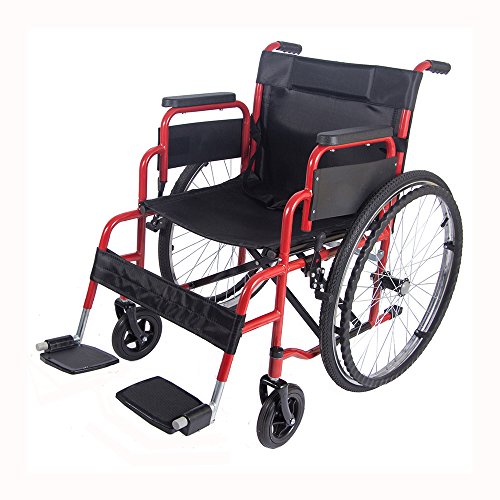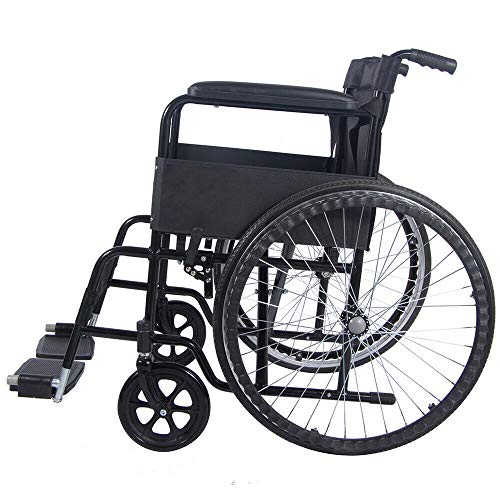Five Killer Quora Answers On How To Self Propel A Wheelchair
페이지 정보

본문
 how to use a self propelled wheelchair to Self Propeller a Wheelchair
how to use a self propelled wheelchair to Self Propeller a WheelchairSelf-propelling a wheelchair can provide a whole new world of independence. It takes a lot of practice and a proper body posture to accomplish this.
A precise grip and method of pushing is essential for proper body positioning. This article will focus on these skills as well as other crucial aspects of wheelchair propelling.
Hand Positioning
Properly pushing a wheelchair using hands is an important element of self propelling. It is recommended to begin with precision and then move to speed. By squatting while pushing, you can improve stability and comfort for users, especially those with upper body restrictions. The hands should be positioned to correspond with the speed of the wheel and push evenly both hands, but without wrapping the thumbs around the rims of the hand. This is a common error that reduces efficiency and increases force required per stroke.
To avoid contact with the rear wheel, the path of recovery for the hands must be in an "equilateral" pendular pattern beneath the hand-rims. This reduces the strain on the shoulders, while keeping the length of each stroke and the number of cycles to an absolute minimum.
It is sometimes recommended to use long strokes and a full recovery on harder surfaces (like the hand position on the timepiece). This can help reduce shoulder injury due to repetitive motion but may increase loading at the shoulders in each cycle.
It is also possible to reduce shoulder injuries by utilizing the same position when stopping and propelling. If the user of a wheelchair is able to keep a steady rhythm for both actions, they'll be able to better manage the forces and adapt to differences in the terrain.
On muddy or soft surfaces, it is often necessary to lean forward a bit when driving, to prevent the front wheels from sinking into ground and tipping backwards. It is worthwhile to test different levels of trunk lean in order to find the right balance between too little and too much. As with any new skill, regular practice will result in increased proficiency and confidence. Wheelchair propulsion can be a life-changing ability for those with mobility issues. Anyone can learn to operate in a manual wheelchair easily with the right equipment, technique and knowledge. This entry was posted under News and tagged wheelchair.
Foot Positioning
The position of the feet of the user is extremely important for stability. It is not advisable to set the wheelchair's feet too far apart because it makes it difficult to self propelled wheelchair near me-propel. Sometimes, it is essential for the wheelchair to have this type of configuration to maneuver over difficult terrain. If the user is attempting to climb an extremely steep ramp or perhaps even over some of the beautiful National Parks and beaches in the US, then the wheelchair needs wheels that can slide over them so that the person can move forward. This is achieved by placing the front wheels as shown in the image below.
The client can push the wheels together by grasping the rims. This requires an enormous amount of upper body strength and is very slow but it is doable and it allows clients who might not be able to get up or down hills achieve this.
It is also crucial for the customer to be competent in doing wheelies so that they can get over obstacles like curbs or other people. In this position the client should place his left foot on top of the right to lift himself up and over the obstruction. The person will then move their right leg upwards and over the obstacle while pushing with their left hand. This is called a crabwalk and can be a very effective way to get a wheelchair moving across some of our most challenging terrain.
They are a great option for those who are injured or disabled who wish to move around without assistance. They are lightweight, portable and can be folded away so they don't take up as much space in a home like other mobility aids take up. They can be converted into powerchairs by using accessories such as the E-Motion, which gives the user the freedom of being able to use their chair while enjoying the benefit of electric assistance if needed.
Braking
used self propelled wheelchair-propulsion of wheelchairs is an important ability for those with mobility issues. They are able to navigate a variety of types of terrains and conditions on their own. It also helps them build strength in their upper arms and shoulders.
The user should press down on one side of the hand's rim and pull up the other side to push the wheelchair forward. This push-pull action generates momentum that propels the wheelchair in the direction desired by the user. The speed at which the wheelchair is propelled can be altered by applying more or less pressure on the rims, or by using hand brakes, if they are fitted with them.
The ideal push cycle should last at minimum three hours. This decreases the amount of time that the shoulder is being strained and reduces the risk of injury due to repetitive strain. The width and size of the back wheels will also affect the speed at which a wheelchair gets propelled. Smaller wheels are more comfortable to maneuver, while larger wheels require more effort. Wheelchairs can also be designed with camber, which aligns the rear wheels with biomechanics and enhances lateral stability.
Wheelchair users looking to improve their techniques for propelling should practice in a secure location, like a parking area or an empty hall. The goal is to develop long, smooth strokes that allow the wheelchair to coast in between strokes.
It's also important for the user to practice moving while moving, such as weaving around objects or navigating turns. One way to practice this is to weave through cones, and then slowly transitioning into straight-line movement. The more a person practices the more comfortable it will be for them to achieve this.
Self-propelled wheelchairs can be a great device to allow people to stay active and do things they enjoy. They can provide independence and be a great method to make friends and go to the movies, or travel. You can regain or continue your independence by learning how to properly use a chair.
Stability
Self-propelling wheelchairs allow wheelchair users to be self-sufficient and to go wherever they wish without the need to rely on others. However, it does take a good level of upper body strength to push the wheels on flat surfaces and up small hills. This is the reason that many wheelchair users use an attendant controlled chair (also called attendant propelled) such as the Action3 NG, or ErgoLite 2 and are being pushed.
It is important to learn how to self propel a wheelchair (simply click the next website page) to grip the hand rims of manual wheelchairs in a way that will maximize functionality and comfort. We often see that customers who are using this type of chair have the hand rims too far forward, meaning they need to reach further backwards using their arms. This is not a good biomechanical strategy and can lead over time to shoulder strain.
The ideal hand-propulsion pattern is a semicircular one that allows the user to alternate between the push phase of the wheelchair and the recovery phase. The push phase requires the person to push down on the casters which is accomplished by a lot of small strokes. This push pattern helps to maintain a healthy range and strengthen the shoulder retractor muscle.
As the recovery phase begins, the client moves their hands back towards the wheel's rims until they make contact with the casters. This allows the user to take several more strokes and minimizes the amount of friction during the recovery phase. Some wheelchair users slide their hands down the rims in a smooth arc during this time, but this isn't as effective and can cause wear on the rims.
Another important aspect of stability is the position of the rear wheel to allow self propelled wheelchair with power assist-propulsion. If the wheel is set too far forward, the wheelchair could slide. It isn't easy to maneuver around obstacles and it is not recommended for injuries to the shoulder. To determine which wheel is suitable for a particular client it is necessary to evaluate their strength, range of motion as well as muscle tone, the state of their orthopedics, and other factors in the seating evaluation.

- 이전글Spa Therapy 24.11.26
- 다음글How to Successfully Germinate Autoflowering Marijuana Seeds 24.11.26
댓글목록
등록된 댓글이 없습니다.


